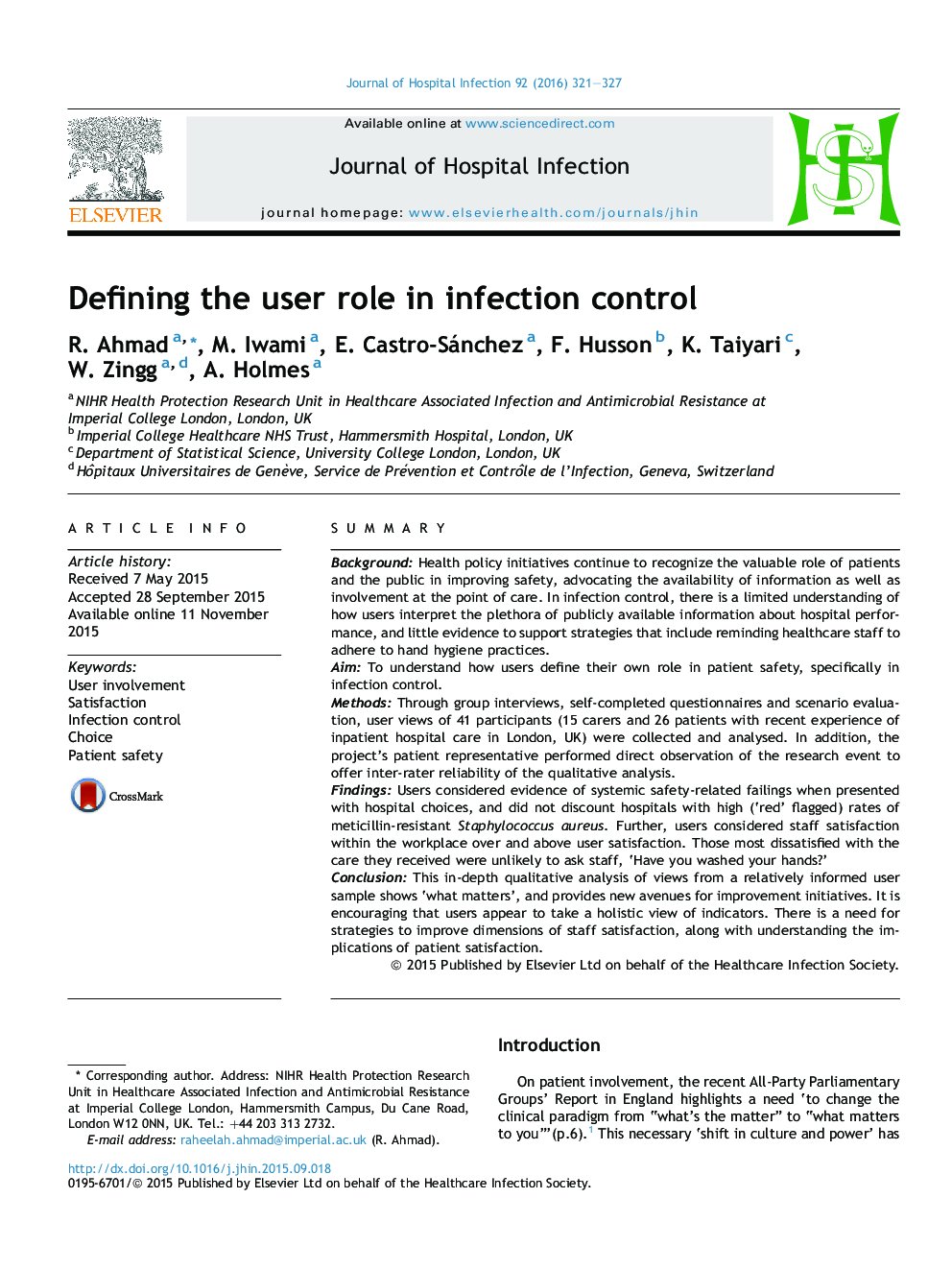| کد مقاله | کد نشریه | سال انتشار | مقاله انگلیسی | نسخه تمام متن |
|---|---|---|---|---|
| 3371469 | 1219199 | 2016 | 7 صفحه PDF | دانلود رایگان |
SummaryBackgroundHealth policy initiatives continue to recognize the valuable role of patients and the public in improving safety, advocating the availability of information as well as involvement at the point of care. In infection control, there is a limited understanding of how users interpret the plethora of publicly available information about hospital performance, and little evidence to support strategies that include reminding healthcare staff to adhere to hand hygiene practices.AimTo understand how users define their own role in patient safety, specifically in infection control.MethodsThrough group interviews, self-completed questionnaires and scenario evaluation, user views of 41 participants (15 carers and 26 patients with recent experience of inpatient hospital care in London, UK) were collected and analysed. In addition, the project's patient representative performed direct observation of the research event to offer inter-rater reliability of the qualitative analysis.FindingsUsers considered evidence of systemic safety-related failings when presented with hospital choices, and did not discount hospitals with high (‘red’ flagged) rates of meticillin-resistant Staphylococcus aureus. Further, users considered staff satisfaction within the workplace over and above user satisfaction. Those most dissatisfied with the care they received were unlikely to ask staff, ‘Have you washed your hands?’ConclusionThis in-depth qualitative analysis of views from a relatively informed user sample shows ‘what matters’, and provides new avenues for improvement initiatives. It is encouraging that users appear to take a holistic view of indicators. There is a need for strategies to improve dimensions of staff satisfaction, along with understanding the implications of patient satisfaction.
Journal: Journal of Hospital Infection - Volume 92, Issue 4, April 2016, Pages 321–327
